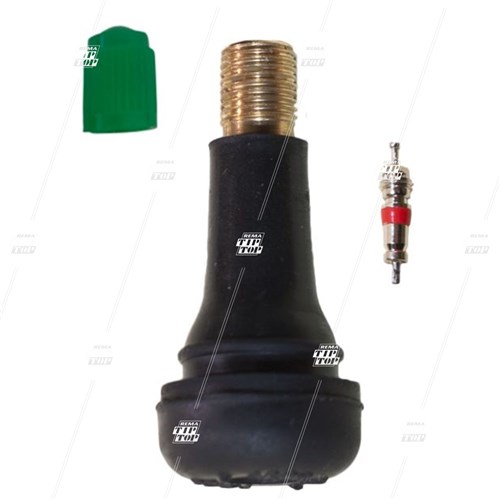How Often Should Tyre Valve Stems Be Replaced?

Most drivers concentrate on tread depth and air pressure when it comes to tyre maintenance; the lowly tyre valve stem is sometimes disregarded. Your tyres remain safe and inflated in great part by these little parts. How often, then should you replace tyre valves and accessories? Let us now explore the specifics.
Understanding Tyre Valve Stems
The tiny protrusions on your wheels called tyre valve stems, allow you to inflate or deflate tyres. Made of rubber, metal, or thermoplastic, they feature a valve core—which seals air within. Heat, UV rays, road trash, and general wear over time can all degrade them, causing air leaks or perhaps unexpected tyre failure.
When Should You Replace Tyre Valve Stems?
Although there is no universal timeline, industry professionals advise looking at valve stems each time you change tyres or during regular maintenance. Replacement for a standard rubber valve is a reasonable rule of thumb every three to five years. Nonetheless, this differs depending on:
Material and Valve Type
Rubber valves: Particularly in demanding environments, rubber valves are prone to cracking and perishing.
Tyre Pressure Monitoring System (TPMS) valves: Often metal and more robust, but their sensors or TPMS valves and valve service kits may need updating every five to seven years.
Tube valves: Common in both bicycles and motorcycles, tube valves should be checked with every tube replacement.
Driving Conditions
Extreme temperatures, salt—common in coastal areas, or regular off-road driving all speed wear. Replace the valve right away if you detect ongoing air loss or obvious damage, including cracks.
Age of the Tyre
Usually, new tyre installation replaces valve stems. Mechanical mechanics often advise fresh valves to guarantee a good seal since reusing old ones runs the danger of leaks.
Signs Your Valve Stems Need Attention
Air leaks: Hissing sounds or a tyre lacking pressure indicate air leaks.
Visible damage: Clearly visible damage includes cracks, splits, or a bent valve stem.
Corrosion: Common in metal valves, particularly around the valve core, corrosion.
Faulty TPMS alerts: Malfunctioning sensors in TPMS could point to valve problems.
During inspections, a small, cheap accessory called a tyre valve tool can help tighten or replace valve cores.
Final Thoughts
Although tyre valve stems aren't the first thought, they are absolutely essential for safety. For a rubber valve, keep to a 3–5 year replacement schedule; align TPMS servicing with manufacturer recommendations; always match new tyres with fresh valves. Ask your mechanic to check them during your next service when in doubt; this little action could prevent a major hassle downstream.
Being proactive and having the right tube valves accessories will help you to keep your tyres—and your routes—rolling perfectly.